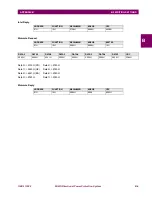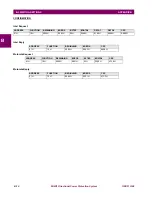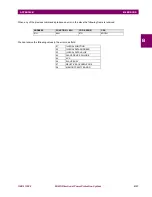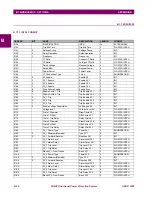
GEK-113308
MIWII Directional Power Protection System
A-1
APPENDIX A
A.1 GENERAL PRINCIPLE OF OPERATION
A
APPENDIX A HARMONIC FILTERINGA.1GENERAL PRINCIPLE OF OPERATION
The present document intends to give an overview on how the relay deals with analog signals, in order to help determine
whether the relay is appropriate for certain applications.
MIWII relays, as the rest of our digital relays, are based on the following functional diagram:
Figure A–1: FUNCTIONAL DIAGRAM
Each of these blocks has its own functionality inside the general operation of the unit, as follows:
•
Transformer (CT/VT):
It adapts the analog current and/or voltage signals to low level signals that can be used by
electronic devices. Additionally, they provide isolation between the environment and the relay.
•
Tap
: It turns current signals into voltage signals, which are better managed. Do not confuse with the tap setting in the
relay.
•
Antialiasing Filter
: It prevents high frequency signals (which cannot be recognized digitally) from entering the analog-
digital converter. The maximum breaking frequency for this filter is determined by the Nyquist criterion, which states
that the maximum frequency that can be recognized when sampling a signal is less than half the sampling frequency.
In MIWII, the sampling is 16 times per cycle, that is, 800 Hz for a frequency set to 50 Hz, and 960 Hz for a frequency
set to 60 Hz.
On the other hand, in order to obtain a reliable oscillography record, it is important to have a high breaking frequency in
this filter.
This filter does not intend to filter the harmonics, this is better done digitally.
In MIWII, the antialiasing filter has a breaking frequency of approx. 260 Hz.
•
Analog-Digital Converter
: It turns the analog signals into digital, so that they can be managed by a micro controller.
•
CPU
: It is the digital signal-processing unit; it takes tripping decisions, etc.
The CPU performs the DFT for current and voltage signals in order to obtain the vectors representing each signal,
which are used for all further calculations in the relay protection functions.
















































